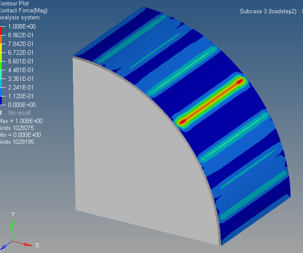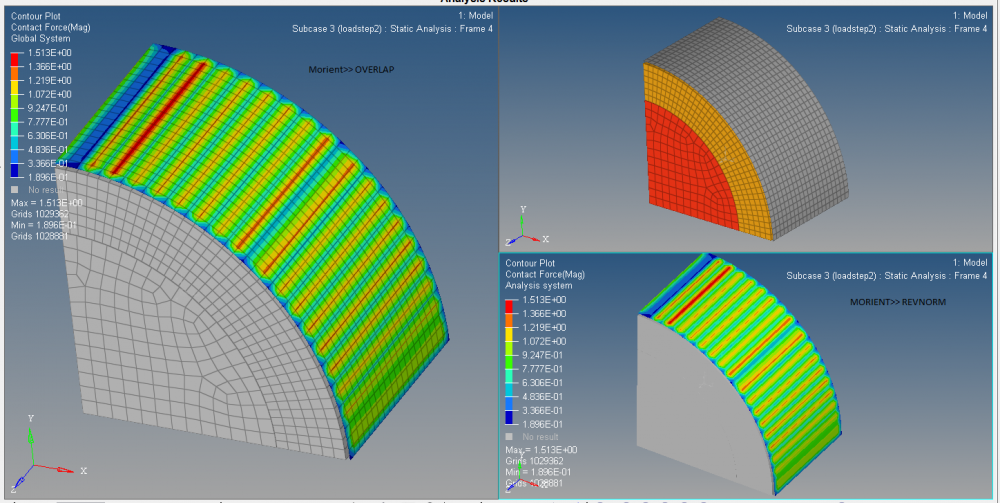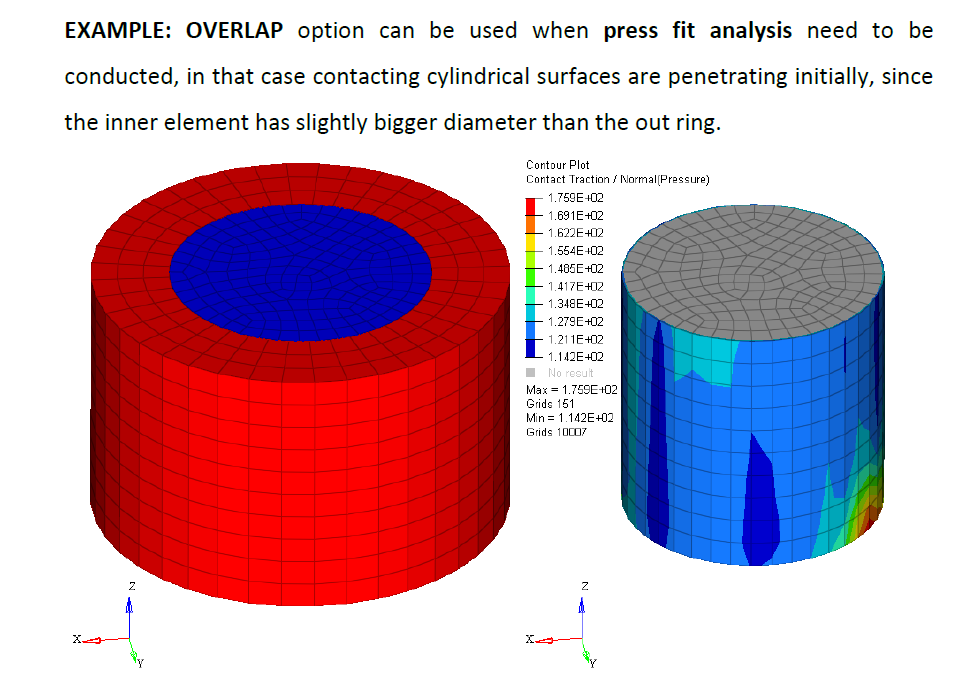Irregular contact force
Good morning,
I am modeling a rotor composed by three components: shaft, magnet and surrounding fiber.
I would like to evaluate the effect of thermal expansion, simulating the contact between the three components.
I have some difficulties with contacts (the contact force is not constant, as expected). Differences are quite small, but I would like to ask you if there are any errors in my model or if there are any possibilities to obtain better results (I have already tried with s2s option in contact definition and with expertnl param).
Thank you so much for your kindness
Enrico
Find more posts tagged with
Please find attached the model with the less fine mesh (refer to load case 3).
In this model, results seems to be more regular
Hi @Enrico
I see that top shell elements and solid elements overlap. Can you try with MORIENT>> ORIENT in CONTACT card and check if this gives any good result?
Hi @Enrico
I am sorry, I can't comment on results as I am not aware of the use case and details of the simulation.
It would be better if you check with your Mentor/project guide or professor.
Thanks anyway
I have another question:
In the Optistruct guide I found that:
<<MORIENT = Orientation of contact “pushout” force from master surface. Applies only to masters that consist of shell elements or patches of grids. Masters defined on solid elements always push outwards irrespective of this flag. >>
So, why changing MORIENT? (as you can see, I defined the solid element surface as master surface).
Is MORIENT effective also when master surface consist of solid elements?
Reading the ebook: Introduction to Nonlinear Finite Element Analysis using Optistruct, page 100, I observe how MORIENT: OVERLAP is used. Because of the type of geometry in the example, I would think these are solid elements. Could you confirm the solids are made of shell elements?
i didn't get your question.
Usually MORIENT is used for Shell elements as master.
MORIENT = OVERLAP is used when you are absolutely sure that your elements are penetration and have overlaps, so that the contact force will be set from the slaves to master, thus removing penetration.
For solids usually it is not necessary to use it.
Good morning,
I am modeling a rotor composed by three components: shaft, magnet and surrounding fiber.
I would like to evaluate the effect of thermal expansion, simulating the contact between the three components.
I have some difficulties with contacts (the contact force is not constant, as expected). Differences are quite small, but I would like to ask you if there are any errors in my model or if there are any possibilities to obtain better results (I have already tried with s2s option in contact definition and with expertnl param).
Thank you so much for your kindness
Enrico
For contact problem, i would suggest to try your simulation with regular HEX element (as showed by @covadonga)
i didn't get your question.
Usually MORIENT is used for Shell elements as master.
MORIENT = OVERLAP is used when you are absolutely sure that your elements are penetration and have overlaps, so that the contact force will be set from the slaves to master, thus removing penetration.
For solids usually it is not necessary to use it.
Thank you Adriano,
Altair´s help says that MORIENT is ignored in solid elements. My question is, is it always ignored? can be MORIENT used with solid elements? The above provided example (included in Altair documents) seems to show solid elements.
Cheers





Hi Enrico,
Thank you for sharing the files. I will check and update to you soon.